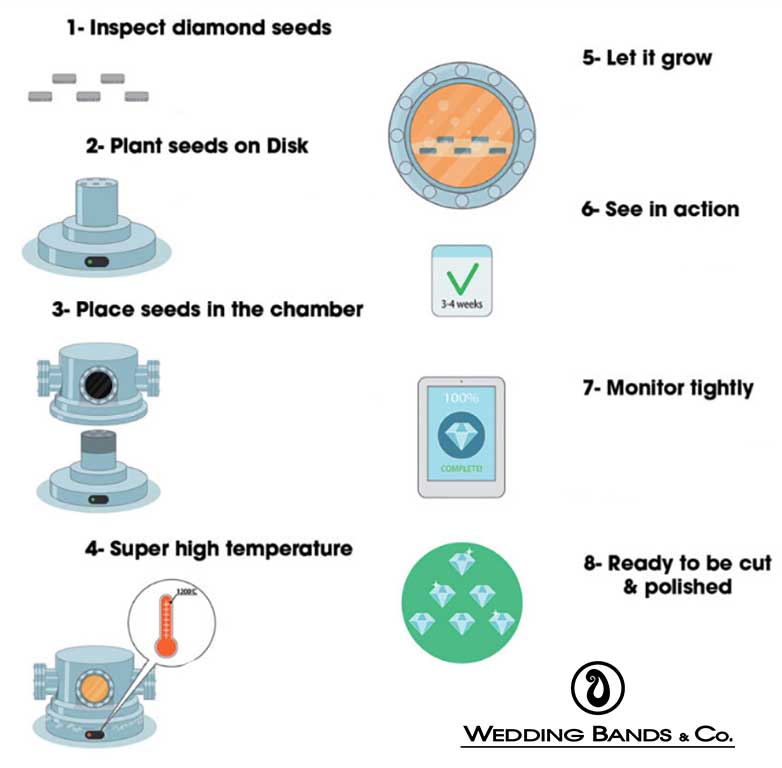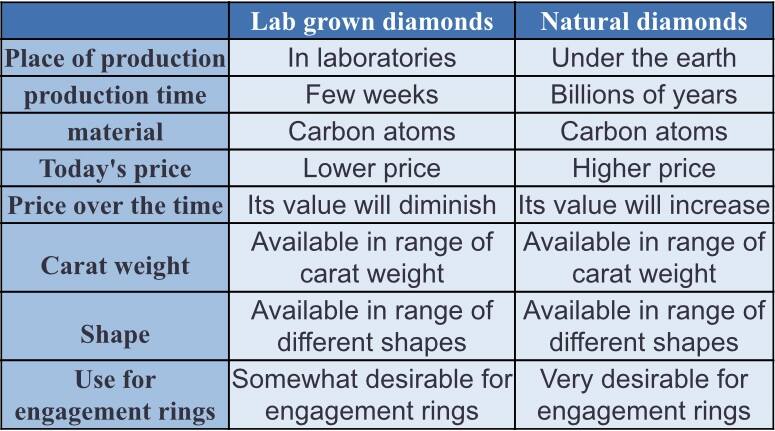Understanding Lab-Grown Diamonds: Everything You Need to Know
Posted by Koorosh Daneshgar on Jan 14th 2023

Lab-grown diamonds are diamonds that are created in a controlled laboratory environment. They are made of the same material as natural diamonds, which is pure carbon that has been subjected to extreme heat and pressure. The only difference between lab-grown diamonds and natural diamonds is their origin: lab-grown diamonds are created in a lab, while natural diamonds are formed deep within the Earth over millions of years.
The process of creating lab-grown diamonds starts with a small diamond seed, which is placed in a growth chamber. The chamber is then heated to extremely high temperatures and subjected to intense pressure, mimicking the natural conditions that cause diamonds to form deep within the Earth. The diamond seed grows into a full-sized diamond over a period of weeks or months, depending on the size of the diamond.
There are two main methods for creating lab-grown diamonds: High Pressure High Temperature (HPHT) and Chemical Vapor Deposition (CVD). The HPHT method simulates the natural conditions of diamond formation by subjecting a diamond seed to high pressure and high temperature. This process can take several weeks or months, depending on the size of the diamond. The CVD method, on the other hand, uses a plasma to deposit carbon atoms onto a diamond seed, which then grow into a full-sized diamond. This process can take as little as a few days.

Lab-grown diamonds are becoming increasingly popular in the jewelry industry, as they offer a more sustainable and ethical alternative to natural diamonds. Unlike natural diamonds, which are mined from the Earth and can have negative impacts on local communities and the environment, lab-grown diamonds are created in a controlled lab environment. Additionally, lab-grown diamonds are often less expensive than natural diamonds, making them more accessible to a wider range of consumers.
While lab-grown diamonds are becoming more common, it's important to note that they are not identical to natural diamonds. They may have slight variations in color, clarity, and size. However, these variations are often not noticeable to the naked eye, and lab-grown diamonds are often graded using the same standards as natural diamonds.

Lab-grown diamonds are also becoming more popular in the diamond industry as they have similar physical and chemical properties of natural diamonds. They are also used in various industrial applications such as cutting, grinding, and polishing.
Lab-grown diamonds are also gaining popularity among consumers who are looking for a more sustainable and ethical option. Natural diamond mining can have negative impacts on local communities and the environment, and lab-grown diamonds offer a way to enjoy the beauty of diamonds without contributing to these negative impacts.
Another advantage of lab-grown diamonds is that they are often less expensive than natural diamonds. This is because lab-grown diamonds do not require the significant costs associated with mining and extractions. This makes them more accessible to a wider range of consumers.
You can visit "Lab Grown Diamonds vs Natural Diamonds: How Are They Different?" and "Why Lab Grown Diamonds are Better?" for more information.

In conclusion, lab-grown diamonds are a great alternative to natural diamonds. They are created in a controlled lab environment, which makes them more sustainable and ethical. They also have similar physical and chemical properties as natural diamonds, and they can be used in various industrial applications. Additionally, they are often less expensive than natural diamonds, making them more accessible to a wider range of consumers. As the technology of creating lab-grown diamonds continues to advance, it is likely that they will become even more popular in the coming years.
We'll help you to design your dream engagement ring without stress and spending countless hours searching for your perfect ring. All you need to do is click on "Free Consultation" to get started.

By: Koorosh Daneshgar CEO/Design Chief

